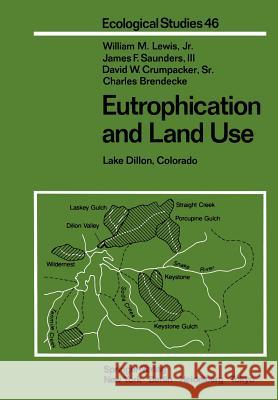Eutrophication and Land Use: Lake Dillon, Colorado » książka
Eutrophication and Land Use: Lake Dillon, Colorado
ISBN-13: 9781461382799 / Angielski / Miękka / 2012 / 202 str.
Nutrient enrichment (eutrophication) is a major theme in freshwater ecology. Some themes come and go, but the inevitable release of phosphorus and nitrogen that ac- companies human presence seems to ensure that eutrophication will not soon become an outmoded subject of study. Eutrophication raises issues that range from the pressingly practical problems of phosphorus removal to the very fundamental ecological questions surrounding biological community regulation by resource supply. Although it is possible to take a reductionist approach to some aspects of eutrophication, the study of eutro- phication is fundamentally a branch of ecosystem ecology. To understand eutrophication in a given setting, one is inevitably forced to consider physical, chemical, and biological phenomena together. Thus while eutrophication is the focus of our study of Lake Dillon, we have assumed that a broad base of lirnnological information is a prerequisite foundation. Eutrophication of a lake can be studied strictly from a lirnnological perspective. If so, the nutrient income of the lake is quantified but the sources are combined within a black box whose only important feature is total loading. It is also possible, however, to treat the watershed and lake as equally important components of a hybrid system. In this case the nutrient sources must be dissected and their variability and dependence on key factors such as runoff must be quantified.











